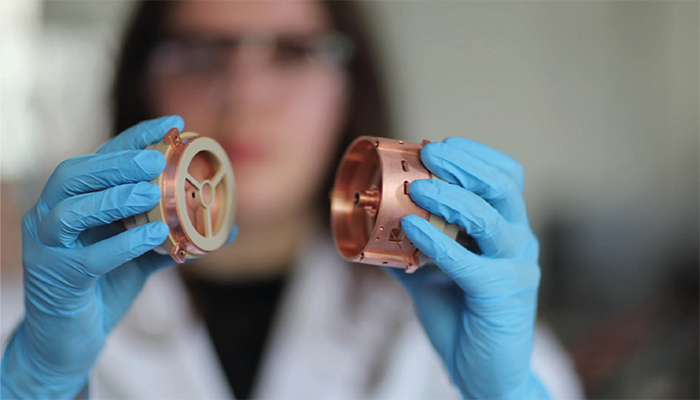A cure for jet lag, CD-MS in action, and how radiation impacts the metabolome – and more mass spec stories

Essential Reading
A few weeks ago, we published this piece on Martin Jarrold’s CD-MS journey: To Megadalton and Beyond. Next week, we publish the next chapter in our CD-MS series – an interview with another pioneer in the field, Evan Williams. Commenting on the commercial landscape for CD-MS, Evan points out that Thermo has already commercialized the Orbitrap version of single-ion mass spectrometry, which has been a commercial product for at least two years now. “They’re using an established instrument in a new way, but I haven’t seen any very high-mass data from Thermo’s instrument,” he says.
Evan is referring to the DMT mode on the Q-Exactive UHMR, which is exactly what researchers from Osaka University, Japan, have used for their multimass analysis of AAV vectors. In addition, they also established a novel method to analyze the encapsidated genome directly without pretreatment, such as protein digestion or heat treatment.
Their conclusion? “Orbitrap-based CDMS holds the potential to become a new standard method in the assessment of CQAs for AAV vectors.”
A Cure for Jet Lag?
A set of molecular "tags" at the tail end of the casein kinase 1 delta (CK1δ) protein has been identified as a key regulator of the body’s circadian rhythms. By using NMR and HDX-MS, scientists have pinpointed specific sites on CK1δ that control its activity, shedding light on how this protein governs the natural 24-hour cycles that influence sleep, metabolism, and other essential functions.
“Regulating our internal clock goes beyond curing jet lag – it’s about improving sleep quality, metabolism, and overall health,” said Patrick Tan, Senior Vice-Dean for Research at Duke-NUS. “This important discovery could potentially open new doors for treatments that could transform how we manage these essential aspects of our daily lives.”
Read more here!
Worth Your Time
With the aid of mass spec data from various experiments, researchers use de novo protein sequencing to identify neutralizing antibodies in human plasma post SARS-CoV-2 vaccination – “a valuable strategy for harnessing the natural immune response of animals and humans, enabling the discovery of antibody reagents and therapeutics,” the authors conclude. Link
High throughput 96-well plate SPE and UHPLC−MS/MS method shows good performance for determining sedatives and β-blocker residues in various animal tissues for food control monitoring. Link
New mass spectrometry imaging (MSI) method of brain organoids allows mapping metabolite distributions – offering insights into brain metabolic pathways and metabolite signatures during early development and in disease. Link
A review of GC-ion mobility spectrometry (IMS) for the detection of human disease highlights several potential disease markers identified by GC-IMS, including ethanal (COVID-19), 2-heptanone (lung cancer) and 3-pentanone (pulmonary cryptococcosis). Link
Chinese Academy of Sciences researchers develop Met4DX, a unified, versatile, and free-to-use data processing tool for multidimensional untargeted metabolomics data. Link
Community Corner
Innovation Awards Deadline: MONDAY
Last year, Gary Siuzdak’s XCMS-METLIN took the top spot in our annual Innovation Awards. Will #TeamMassSpec retain its crown? Well, that’s up to you – and our panel of expert judges.
To ensure that we don’t miss a commercially released technology or software solution that you think is especially innovative and impactful – including from smaller spin-offs or start ups, like last year’s winner – nominate now. The deadline is today!




